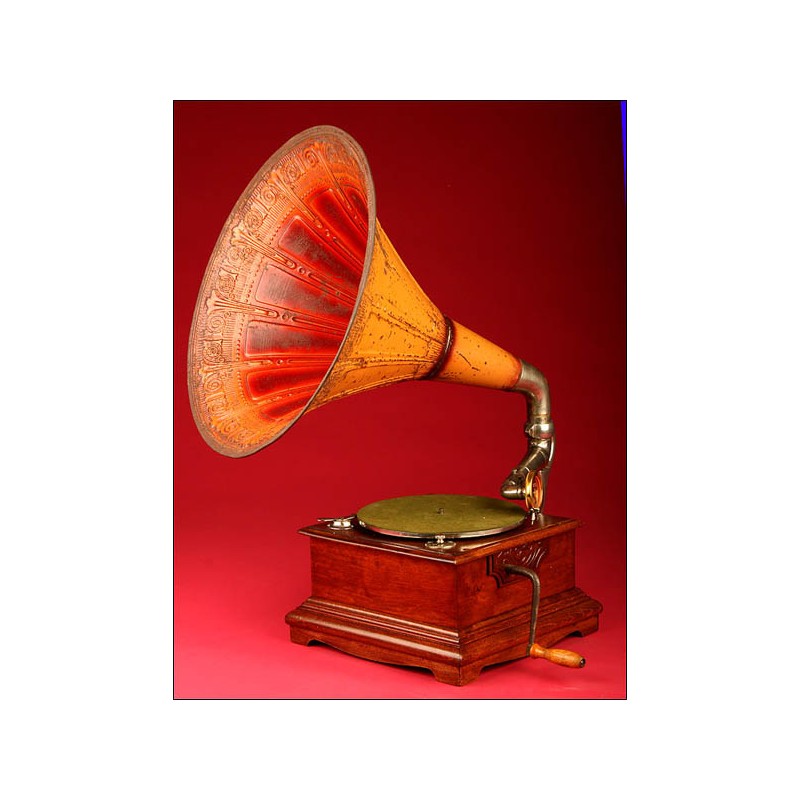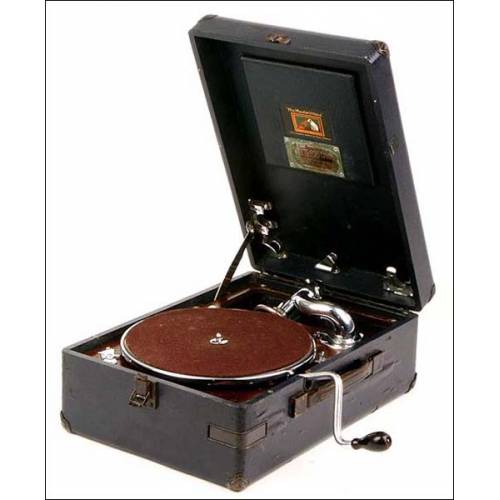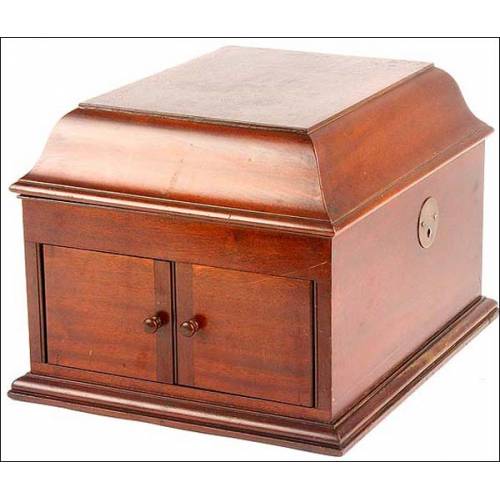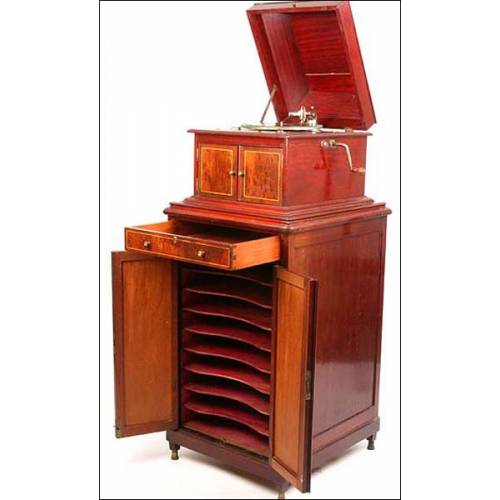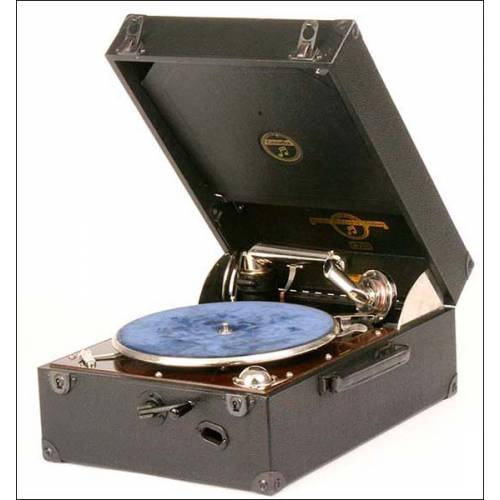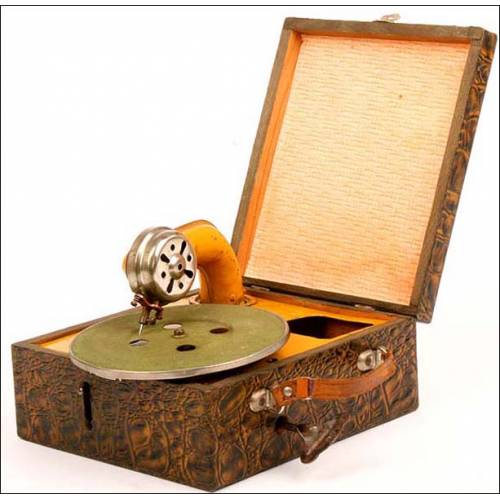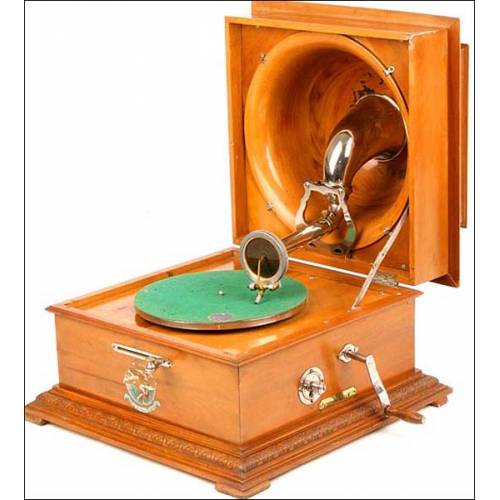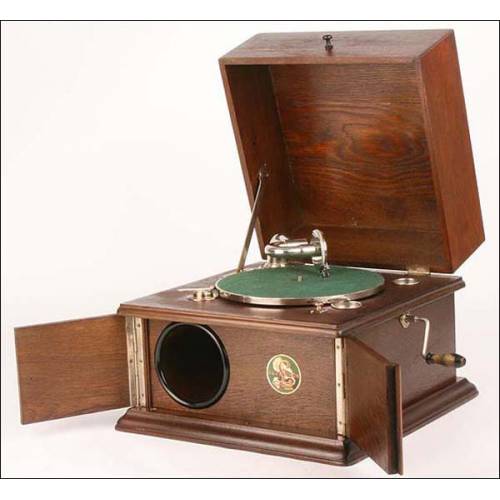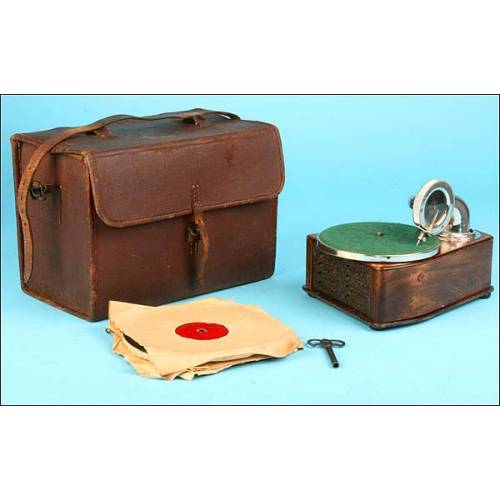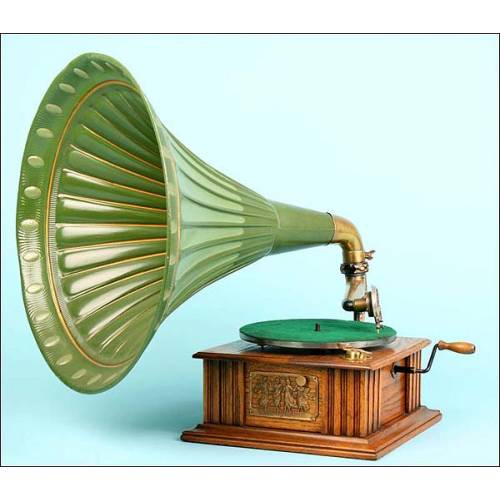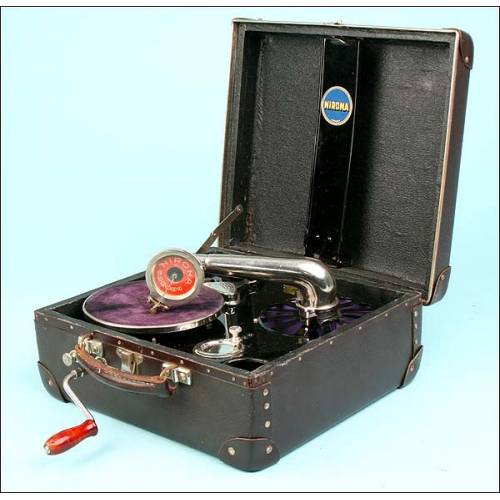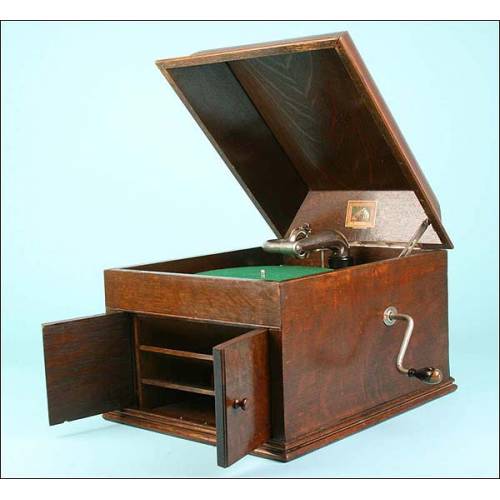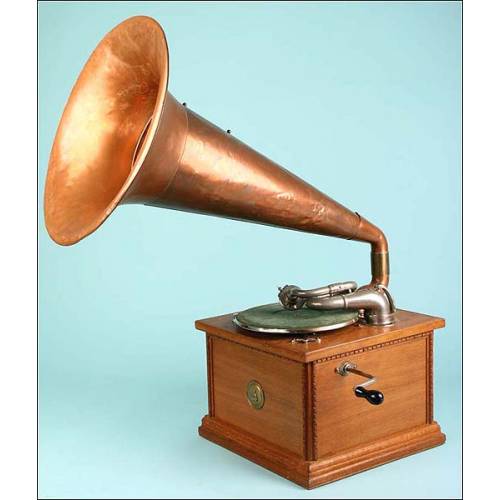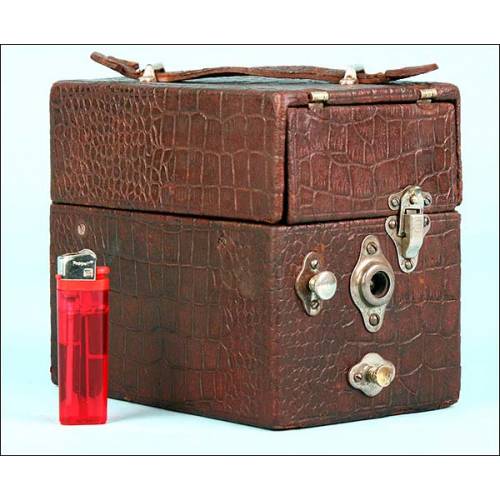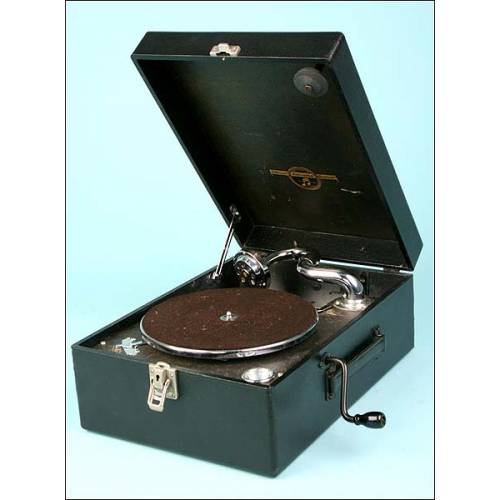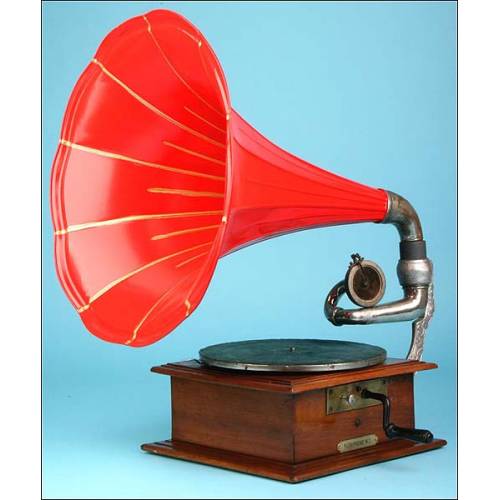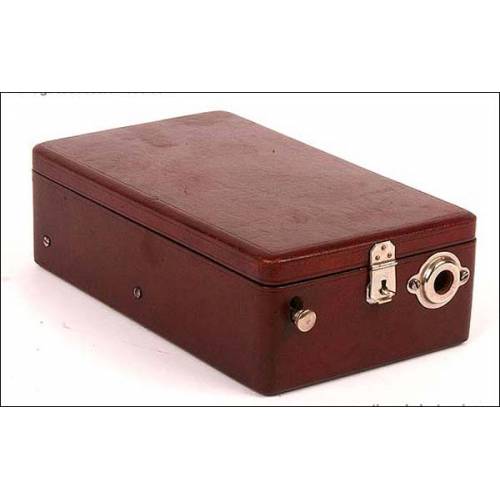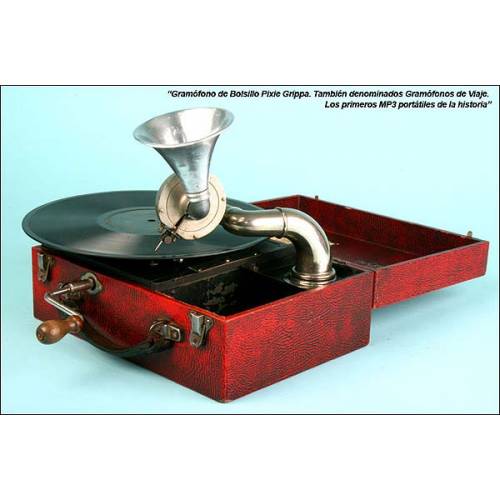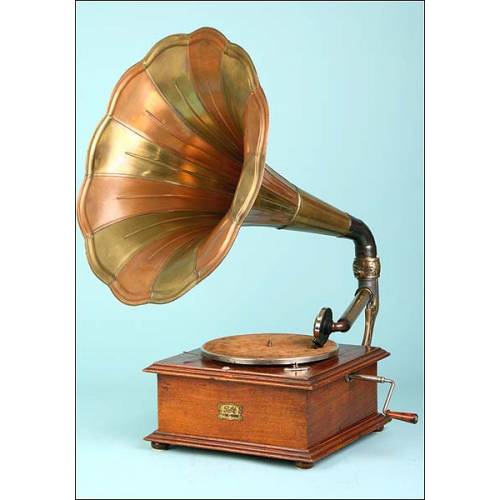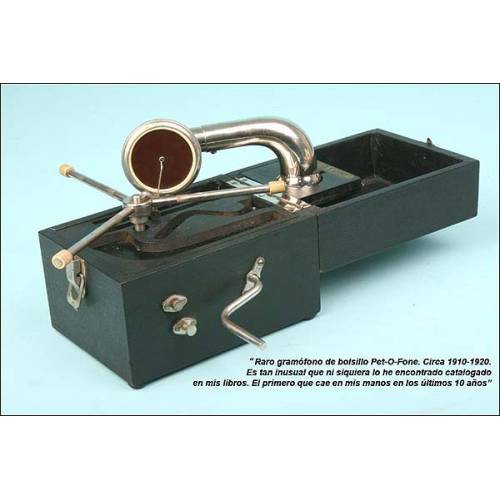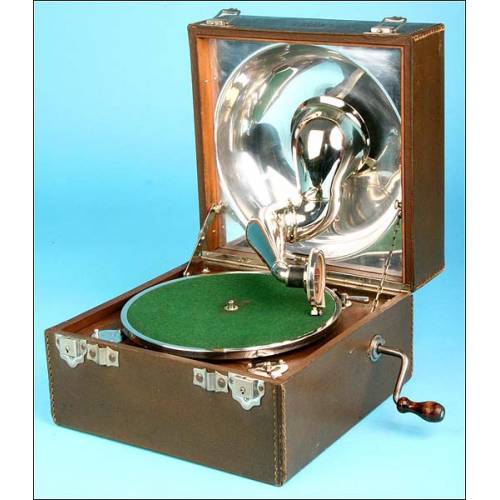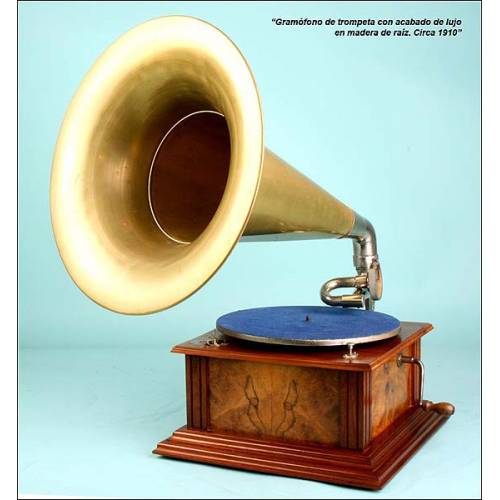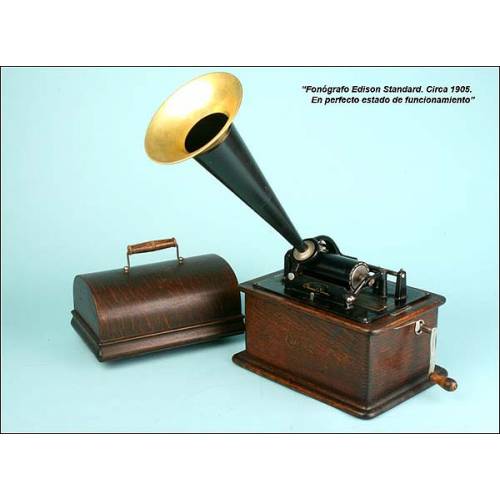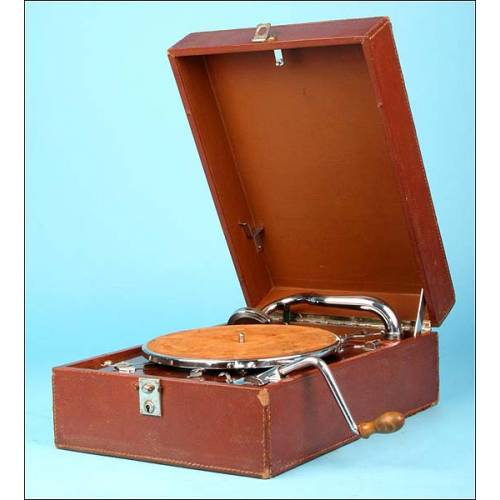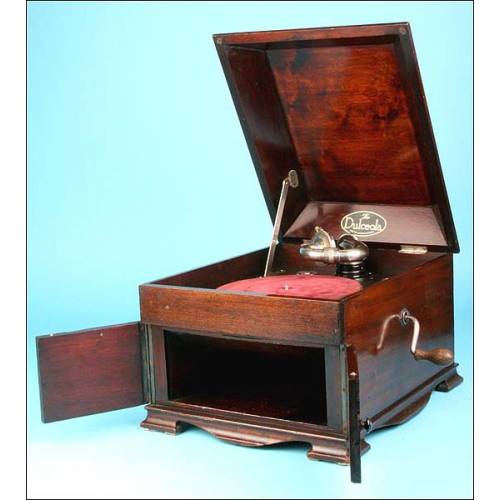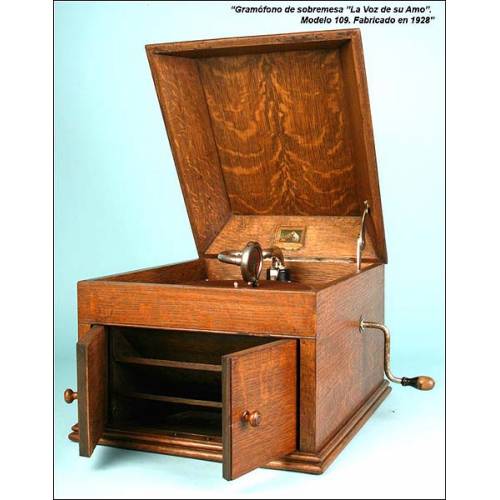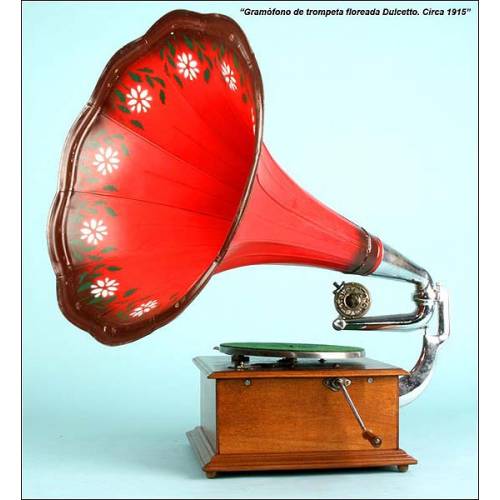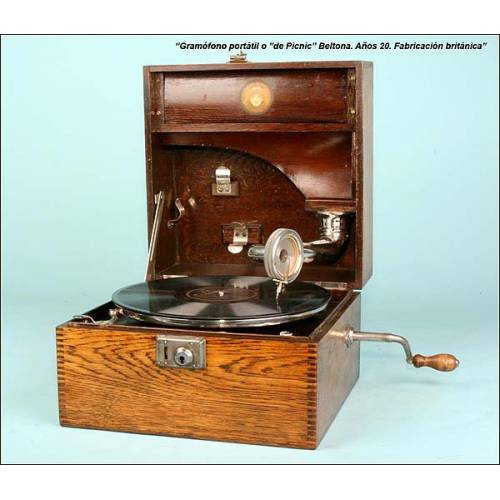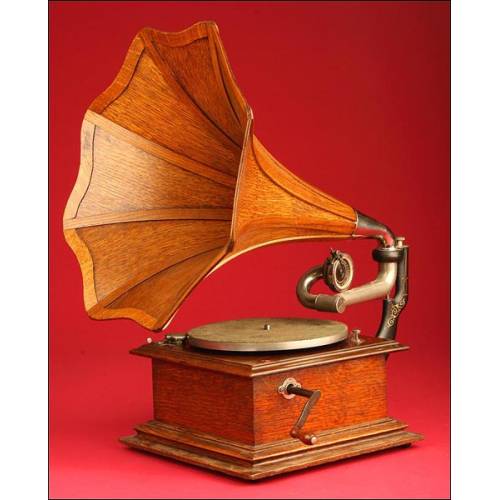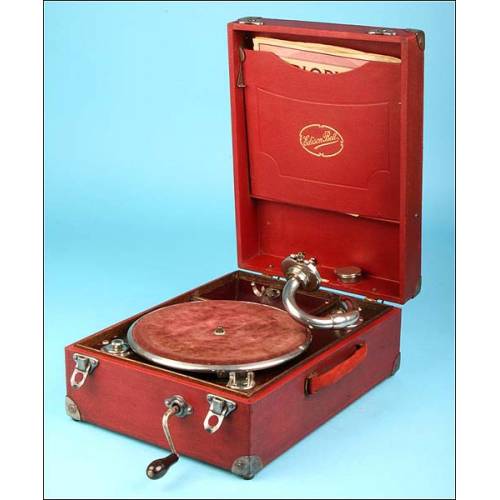J-351
German Jugendstil Style Gramophone in Perfect Condition. Ca.1900
German Jugendstil Gramophone, ca. 1900.
Sold!
Precious German Jugendstil Style Gramophone in Perfect Condition and with All its Original Parts. Ca.1900. In perfect working condition. Splendid beech wood case with a beautiful vegetal decoration in the crank area according to its style. In this magnificent piece stands out the beautiful aluminum horn with its original painting of the period, painted in orange tones decorated on the inside with geometric and vegetal forms of clear Jugendstil influence. The polychrome of the horn is the original, although it has some flaws in areas, it stands out for its beauty and denotes a point of nostalgia. Reproducer in perfect condition with the mark "Saturn Electric" engraved. Piece with brake and speed regulator located on the top of the box. This piece has excellent aesthetic and functional characteristics and all its parts are original. It is in perfect working condition, with all original parts, overhauled and revised. It is a genuine piece, and not one of the increasingly common copies found in the market. It also attaches several records and needles to enjoy its sound from the first day. The gramophone will be a tough competitor of the phonograph when the German Emile Berliner invented it in 1887. It was a new reproducer device not based on the Edisonian cylinder, but on that round surface despised by the father of the phonograph, developing the recording laterally, through the groove instead of up and down. Between the disc and the cylinder there would be a fierce struggle, which ends up winning the disc thanks to an aggressive advertising campaign that would make this format would get more and more followers. The Jugendstil style (youth style) is a variant of the well-known Art Nouveau, which emerged in Germany during the last decade of the nineteenth century. The term came from the title of the magazine "Jugend" founded by George Hirth in Munich in 1896. The Jugendstil designers, such as Hermann Obrist, Richard Riemerschmid and August Endell, had very idealistic goals. They wanted to reform art and recover a simpler lifestyle that was less conditioned by commercial imperatives. They shared a marked optimism of youth and a great respect for nature that they would transfer to all their artistic pieces. This style would appear marked by a decorative style of sinuous and vegetal forms, but much more austere and demure than its French counterpart, as can be seen mainly in the horn of this piece, a true collector's item! It is not easy to find pieces in Jugendstil style and even less in such good condition. Measures: 30 x 24 x 34 cm (case) and 78 x 48.5 cm diameter (horn).

